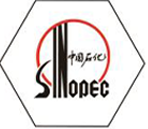
Aug . 29, 2024 18:05
Back to list
مخفض الضغط
Understanding Pressure Reducing Valves (PRVs)
Pressure reducing valves (PRVs) are essential components in various fluid systems, particularly in hydraulics and pneumatics. Their primary function is to regulate and reduce the pressure of incoming fluid to a desired level, ensuring safe and efficient operation in a wide range of applications, from residential plumbing to industrial systems.
.
One of the primary benefits of using PRVs is their ability to provide consistent pressure levels, which is crucial for maintaining the performance and longevity of machinery and appliances. For instance, in a residential plumbing system, a PRV helps to control water pressure, preventing damage to pipes and fixtures while ensuring adequate water flow. Similarly, in industrial applications, PRVs safeguard equipment such as pumps and compressors from pressure surges that could lead to catastrophic failures.
مخفض الضغط

Moreover, PRVs are integral in energy conservation. By maintaining optimal pressure, they help reduce the energy consumption of pumps and other equipment, leading to cost savings and reducing the overall environmental impact of operations. In many cases, installing a PRV can result in more efficient system performance, ultimately enhancing productivity.
As technology advances, PRVs have evolved to include features such as remote monitoring and electronic controls, allowing for greater precision and control over fluid pressure. These innovations enhance the reliability of fluid systems and provide operators with real-time data to make informed decisions.
In conclusion, pressure reducing valves play a crucial role in managing fluid systems across various industries. Their ability to regulate pressure contributes to operational safety, equipment protection, and energy efficiency. As industries continue to evolve, the importance of reliable and efficient PRVs will only grow, making them a fundamental component in modern fluid management systems. Understanding and implementing PRVs is essential for anyone involved in system design and maintenance, as they ensure optimal performance and longevity of fluid systems.
Latest news
-
Safety Valve Spring-Loaded Design Overpressure ProtectionNewsJul.25,2025
-
Precision Voltage Regulator AC5 Accuracy Grade PerformanceNewsJul.25,2025
-
Natural Gas Pressure Regulating Skid Industrial Pipeline ApplicationsNewsJul.25,2025
-
Natural Gas Filter Stainless Steel Mesh Element DesignNewsJul.25,2025
-
Gas Pressure Regulator Valve Direct-Acting Spring-Loaded DesignNewsJul.25,2025
-
Decompression Equipment Multi-Stage Heat Exchange System DesignNewsJul.25,2025

